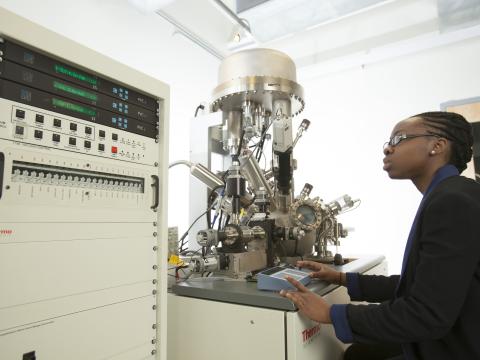X-ray photoelectron spectroscopy (XPS) is the most used surface analytical technique. For the outermost ten nanometers of a material, it provides semi-quantitative elemental compositions and oxidation state or chemical bonding information. XPS can detect any element except hydrogen and helium with a detection limit of about 0.3 atomic percent. Most materials stable in ultrahigh vacuum can be analyzed with little to no sample preparation. Ion-sputtering depth profiling also allows for data to be collected for up to a couple of microns depth.
Typical Applications
- Determination of surface composition and bonding
- Mapping lateral variation of surface chemistry down to ~3 micrometers (µm)
- Nondestructive elemental depth profiles
- Destructive elemental depth profiles several thousand angstrom (Å) into the sample
- Variable temperature analysis
Instruments

ThermoFisher Scientific ESCALAB Qxi XPS
- Monochromatized aluminum and gold X-ray sources
- Non-monochromatized magnesium and titanium X-ray sources
- UV radiation lamp for UPS analysis
- Argon (Ar) source for depth profiling, capable of producing both cluster ions and atomic Ar+ ions
- Integrated laser for Raman spectroscopy coincident with XPS analysis
- Hot and cold stage for variable temperature analysis
- Spatial resolution of less than 3 µm
- Holds samples up to 7mm thick

ThermoFisher Scientific ESCALAB 250 XPS
- Monochromatized aluminum X-ray source
- Non-monochromatized magnesium and zirconium X-ray sources
- UV radiation lamp for UPS analysis
- Ar+ source for depth profiling
Instrument Contact: Stephen Golledge
